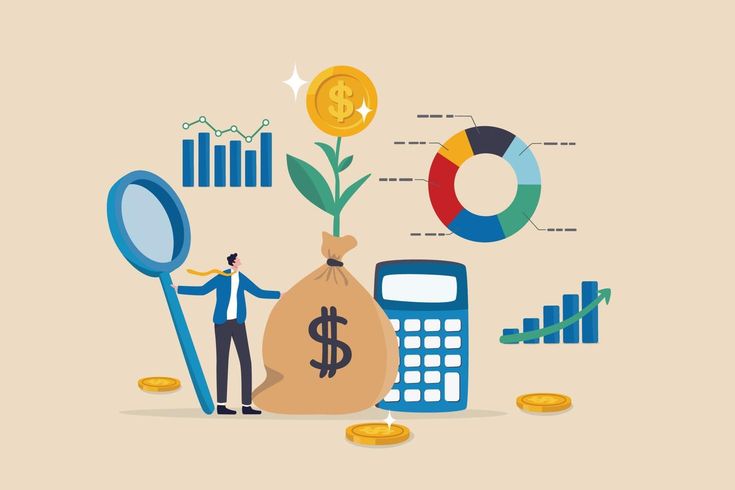A deep dive into revenue the lifeblood of your business
Strong revenue is the cornerstone of a successful business, powering its operations and expansion. Simply put, revenue is the total amount of money a company brings in through its operations. This blog post will explore what revenue is, how it’s calculated, its importance, and strategies for managing and optimizing it.
Definition of revenue
Revenue, often referred to as the top line, represents the total income generated by a company’s core business activities. It encompasses all money earned from selling goods and services before any expenses are deducted. Essentially, it is the gross income of the business.

Understanding revenue
Revenue represents the income a company earns from its business activities within a set period, such as a quarter or year, before deducting expenses. It’s a key indicator of business performance and growth potential.
Revenue recognition methods
Revenue can be calculated differently based on the accounting method used. In accrual accounting, revenue includes sales made on credit as long as goods or services have been delivered to the customer. This method recognizes revenue even if payment hasn’t been received yet.
Cash accounting, in contrast, records revenue only when payment is received. Money paid to a company is called a “receipt,” but not all receipts are revenue. For example, if a customer pays in advance for a service or product that hasn’t been delivered, it generates a receipt but doesn’t count as revenue until fulfillment.
The Financial Accounting Standards Board’s Revenue from Contracts with Customers (Topic 606) provides guidelines on recognizing revenue. This guidance, updated regularly, requires companies to follow these five steps to accurately report revenue:
- Identify the contract with the customer.
- Identify the contract’s performance obligations.
- Determine the transaction price.
- Allocate the transaction price to the performance obligations.
- Recognize revenue when a performance obligation is met.
Revenue and profit
Revenue, often called the “top line,” appears at the start of an income statement. After subtracting expenses from revenue, the resulting figure is net income, also known as the “bottom line.” When revenues exceed expenses, a company realizes a profit.
To boost profit and earnings per share (EPS) for shareholders, companies aim to increase revenue or reduce expenses. Investors closely examine both revenue and net income as indicators of a company’s financial health.
For instance, net income might rise while revenue remains unchanged due to cost-cutting measures. While this can improve short-term profitability, it may signal limited long-term growth if revenue isn’t increasing.
When public companies release quarterly earnings, revenue and EPS are two metrics that attract significant attention. Surpassing or missing analysts’ expectations for these figures can lead to stock price fluctuations, highlighting the importance of revenue as a key performance measure.

Key sources of revenue
Sales of Goods and Services
Sales of goods and services are the primary source of revenue for most businesses. This revenue is generated when customers purchase products or services from the business. The sales process typically involves the following steps:
Product or service development
The business develops or sources products and services that customers truly want.
Marketing and promotion
The business shines a spotlight on its products and services, reaching out to potential customers through ads, social media, and public relations.
Customer engagement
The business interacts with potential customers to provide information about its products or services and answer any questions they may have.
Purchase
In the purchasing process, the customer makes a decision to either acquire the product or utilize the service.
Delivery
The business delivers the product or service to the customer.
Payment
The customer pays for the product or service.
Interest Earned
Interest earned is money earned from interest on investments or savings. When individuals or businesses save money in accounts like savings or certificates of deposit, or invest in other financial instrument, the financial institution typically pays interest on the balance. The amount of interest earned depends on the interest rate offered by the financial institution and the amount of money invested.
Equity Increases
Equity increases are gains from investments and other financial instruments. When an individual or by investing in stocks, bonds, or other financial assets, businesses aim to grow their wealth over time. This increase in value is known as an equity increase. Equity increases can be realized when the investment is sold or when the value of the investment increases.
Components of revenue
Revenue is not just about sales. It includes various other components that contribute to a company’s total income:
Standard earnings
Income from the primary business activities.
Gained interest
Earnings from interest on financial investments.
Equity increases
Profit from the appreciation of assets or investments.
Types of revenue
Operating revenue
Operating revenue is a company’s core income. It’s the money earned from its main business activities. For example, a store makes money by selling products. This figure shows how well a company’s core operations are performing.Core Income: Operating revenue represents the essence of a company’s financial well-being. It reflects the money earned through its principal business activities. Imagine a store; its operating revenue stems from the sale of products. This metric serves as a barometer of the effectiveness and efficiency of a company’s core operations.
Non-operating revenue
Revenue generated from activities unrelated to the company’s primary operations. These can include:
Interest
Earnings from interest-bearing accounts.
Dividends
Income from investments in other companies.
Rent
Income from leasing property.

Revenue calculation
Basic formula
To calculate revenue, you typically use the following formula:
Revenue = Total earnings (sales) + Interest + Equity increases
For net income, you would then deduct expenses and tax liabilities from the total revenue.
Sector-specific methods
Different industries may have unique methods for calculating revenue. For example, in the energy sector, revenue calculation might consider the total energy sold and the prices set by regulatory bodies.
Revenue recognition
Conditions for recognizing revenue
Revenue recognition is guided by specific principles that determine when income should be recorded. Key conditions include:
Transfer of ownership
Revenue is recognized when ownership of goods is transferred to the buyer.
Service completion
In the context of service-based transactions, revenue recognition occurs upon the completion of the provided service.
Revenue recognition principles
Revenue isn’t just about when you get paid. It’s about when you’ve actually earned it. This accounting rule makes sure your financial picture is accurate and honest.
Revenue vs. profit
Revenue
Revenue is the total money a company earns from selling products or services. It’s a measure of a business’s sales performance.
Profit
Profit, on the other hand, is what remains after all expenses have been deducted from revenue. It shows the actual financial gain and is crucial for assessing the company’s efficiency and viability.
Importance of revenue
Indicator of business performance
Revenue serves as a pivotal barometer of a company’s operational success. When revenue shows consistent growth, it often suggests a robust business environment. This growth can captivate the attention of potential investors and stakeholders, making it an attractive investment opportunity.
Basis for calculating profit
Revenue is the starting point for calculating profit. By subtracting expenses from revenue, businesses can determine their net income, which is vital for decision-making and strategic planning.
Enhancing profitability and resource allocation
Effective revenue management helps businesses optimize their resources, ensuring that they can enhance profitability and sustain growth. Understanding where revenue comes from and how it fluctuates allows businesses to allocate resources more efficiently.
Revenue management
Strategies for maximizing revenue
Effective revenue management involves several strategies, such as:
Dynamic pricing
Optimizing prices in response to customer demand and market changes.
Product bundling
Offering packages of products or services to increase sales.
Customer segmentation
Targeting different customer groups with tailored offerings.
Aligning product prices with customer willingness to pay
Understanding what customers are willing to pay for products and services allows businesses to set optimal prices. This strategy helps in maximizing revenue while maintaining customer satisfaction.
Impact on business profitability
Proper revenue management directly impacts profitability. By maximizing revenue and controlling costs, businesses can improve their bottom line, ensuring long-term sustainability.

Revenue operations (RevOps)
Integrating finance, sales, marketing, and customer success
RevOps is a strategic approach that integrates various departments, including finance, sales, marketing, and customer success, to drive revenue growth. This holistic approach ensures that all teams are aligned and working towards common financial goals.
Key components
Team alignment
Ensuring all departments work together seamlessly.
Process optimization
Streamlining processes to enhance efficiency and revenue generation.
Benefits
Improved efficiency
Streamlined operations reduce redundancies and enhance productivity.
Enhanced customer experience
Better coordination leads to improved customer service and satisfaction.
Implementation strategies
Steps to integrate RevOps in a business include:
Assessment
Conduct a comprehensive assessment of existing workflows to pinpoint pain points and opportunities for optimization.
Alignment
Bring all relevant teams together to align on goals and strategies.
Technology integration
Implement tools and systems that facilitate coordination and data sharing.
Continuous monitoring
Continuously assess and adapt strategies to guarantee their ongoing relevance and effectiveness.
Case studies and practical examples
Successful revenue management practices
Amazon
Known for its dynamic pricing strategies and extensive use of data analytics to optimize revenue.
Airlines
Use yield management techniques to adjust prices based on demand, maximizing revenue from seat sales.
Revenue optimization in the energy sector
In the energy sector, companies like Energinet use sophisticated models to forecast demand and set prices, ensuring they maximize revenue while meeting regulatory requirements.
Understanding and effectively managing revenue is essential for business success. Revenue is more than just a measure of income; it’s a vital indicator of performance and a basis for strategic planning. By employing effective revenue management strategies and integrating revenue operations, businesses can enhance their profitability and ensure sustainable growth.
FAQs
What is revenue, and why is it important?
Revenue is the total income generated from a company’s core business activities. It’s important because it indicates the business’s ability to generate sales and sustain operations.
How is revenue different from profit?
Revenue is the total income before expenses are deducted, while profit is what remains after all expenses have been subtracted from revenue.
What are the main types of revenue?
The main types of revenue are operating revenue, which comes from core business activities, and non-operating revenue, which comes from secondary sources like interest and dividends.
How can businesses maximize their revenue?
Businesses can maximize revenue through dynamic pricing, product bundling, customer segmentation, and effective revenue operations that align various departments.
What is RevOps, and how does it benefit businesses?
RevOps, or revenue operations, is a strategic approach that integrates finance, sales, marketing, and customer success to drive revenue growth. It benefits businesses by improving efficiency and enhancing the customer experience.


